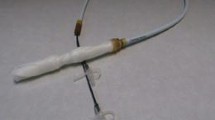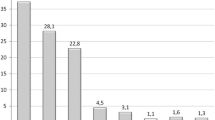Background: Various intragastric balloons have been used in obese patients for temporary weight loss. Recently, a new balloon, the Heliosphere® Bag, was proposed. In a preliminary study, we evaluated the safety and efficacy of this device. Methods: The Heliosphere® Bag was used in 10 patients, selected according to the guidelines for obesity surgery. The manufacturer's instructions were followed in positioning the device. Heliosphere® Bag positioning was performed, after diagnostic endoscopy, under unconscious sedation. After placement, the balloon was slowly inflated with 840-960 cc of air, which gives the inflated final volume of 650-700 cc of air, as the air is compressed. On the first and second post-treatment day, intravenous saline (30-35 ml/kg/d) with omeprazole (20 mg/d), ondansetron (8 mg/d) and butylscopolamine bromide (20 mg t.i.d.) were given to all patients. All patients from day 3 after placement began liquid diet and were discharged home on day 4 on a 1000 kcal diet (carbohydrate 146 g, lipid 68 g, protein 1 g/kg ideal weight). After 6 months, the Heliosphere® Bag was removed. The patients were followed monthly, and complications and their treatment, post-placement symptoms, BMI and %EWL were recorded. Data were expressed as mean ± SD. Results: From Sept-Dec 2004, 10 patients (5M/5F) underwent Heliosphere® Bag placement, with age 35.2 ± 15.7 years (17-49), BMI 43.3 ± 8.1 kg/m2 (35-51.2), and weight 126.8 ± 23.7 kg (98.4-148). Heliosphere® Bag positioning was quite difficult in all patients due to low pliancy and large size of the bag, causing patient discomfort. System failure at time of Heliosphere® Bag positioning was observed in 5/10 patients (50%). At time of removal, the Heliosphere® Bag was not found in the stomach in one patient. In 3 other patients, the balloon was found partially deflated. At the time of balloon removal after 6 months, BMI was 37.4 ± 13.4 (28.9-42.1) and %EWL was 29.1 ± 20.1 (9.0-57.4). BMI loss was 5.2 ± 13.1 (1.9-11.2) and mean weight loss was 17.5 ± 16.2 kg (5-33). Conclusions: Although weight loss was satisfactory, this device cannot be considered an advance for the temporary treatment of morbid obesity. This balloon still has some instrumental and technical problems that need to be solved: high rate of system failure at positioning, high rate of spontaneous deflation, absence of a marker such as methylene blue, and large size with low pliability that cause significant patient discomfort.
Similar content being viewed by others
Author information
Authors and Affiliations
Rights and permissions
About this article
Cite this article
Forestieri, P., De Palma, G.D., Formato, A. et al. Heliosphere® Bag in the Treatment of Severe Obesity: Preliminary Experience. OBES SURG 16, 635–637 (2006). https://doi.org/10.1381/096089206776945156
Published:
Issue Date:
DOI: https://doi.org/10.1381/096089206776945156




